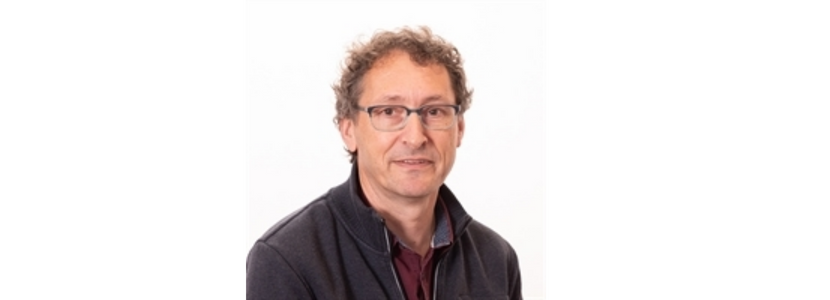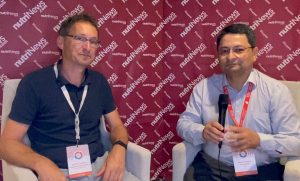Dr. Edgar Oviedo collaborator for nutriNews International had the opportunity to speak with Dr. Walter Gerritts about calorimetry systems and their current applications in animal nutrition.

Dr. Edgar Oviedo collaborator and co corresponding author for nutriNews International had the opportunity to speak with Dr. Walter Gerritts Professor of Animal Nutrition at Wageningen University about calorimetry systems and their applications in animal nutrition. His research focuses on digestive physiology and macronutrient metabolism in various species, mostly pigs and calves. Professor Gerrits has focused on interactions between nutrition, health and welfare.

This interview took place during the 7th EAAP International Symposium on Energy and Protein Metabolism and Nutrition (ISEP 2022) held in Granada (Spain) from September 12-15, 2022.

Dr. Edgar Oviedo: We are here at ISEP 2022 with Dr. Walter Gerrits. Dr. Gerritts you will be conducting a colorimetry course in this event, after the main program has finished. Could you tell us what you will be discussing in this course, and what are the main applications for these calorimetry systems?
Dr. Oviedo: With indirect calorimetry you can also probably measure the impacts of animal activity, whether they are moving or staying still. How can you quantify locomotion through these systems, is it possible to include this within a model that calculates maintenance requirements?
Dr. Gerrits: Well that is a lot of questions in one, but yes you can measure locomotion, and quantify it. Therefore, you can separate the heat production that is related to physical activity from what is unrelated to this type of activity. The problem with this is that most respiration chambers a re too small for animals to be moving around freely, but there are facilities available where you can have group housed pigs or poultry, and even free ranging cows. If you for example have a surface of 6x3m, you could have 2 to 3 cows in there but that is the maximum space that you have available. If you want to measure heat production during grazing conditions or out in the field for example, you need to have estimates that are calibrated in this kind of calorimeters. So you can do that too, but measurements in respiration chambers are with limited movement.
Dr. Oviedo: One of the questions that we have as nutritionists is: how can we apply this information to make feeding systems more precise? What are the necessary steps to translate the information from indirect calorimetry into feed formulation and feeding practices?

Dr. Gerrits: That is a very nice question. I think we must not forget that the Net energy systems that are used in many countries these days are all based on indirect calorimetry measurements. So the datasets from Rostock in Germany back in the previous century, but also at Wageningen University and different places, people have been estimating heat production in response to different ingredients and thereby establishing individual energy values for these ingredients. So, that is used today. Now, looking forward, I think these techniques are important to quantify interactions between the environment and nutrition. For example we carry out measurements for animals that are housed under low sanitary conditions where we see higher heat production rates and lower nitrogen retention. You can use this type of information in feeding systems, but it is an interaction between nutrition and the environment, which makes it difficult to attribute this to feeding values at a feeding table, as it is more on the requirements’ side.
Dr. Oviedo: That is great. You are also presenting a research paper on validating a method that analyzes oxygen consumption and heart rate. I think you carried out this study on dairy cows if I am not mistaking. Could you tell us a little more about this and what are the applications of this system?
Dr. Gerrits: This is a study we did together with people in Uruguay where there is a lot of grazing activity. What they did is that they measured the heart rate of cows and during a short period of time where they also measured oxygen consumption. So they had a mobile device to measure both oxygen consumption and heart rate in cows. They quantified cows’ heart rate in the paddock and then calculated heat production from heart rate What we did in this study, is that we suspected that heat stress would have an effect on the oxygen pulse, so we did a study where we varied temperature, humidity and air speed, and we checked to what extent did the oxygen pulse remained constant. We would expect that if temperature goes up, and cows are sweating a lot the function of the heart changes. Not only for the transport of oxygen and CO2, but also to transport moisture to peripheral tissues. We checked whether this was constant or not, and we actually found out that there is a huge difference between individual cows, but the effect of temperature is very small. So, you can this technique out in the field. We used colorimeters for calibrating and designing these kinds of equations and you can use it in the field by simply measuring the heart rate of individual cows. The only difference is that you do hace to measure oxygen consumption during a short period of time. Therefore you need a mobile device to do that.
Dr. Oviedo: Perfect. So, does this system help to improve the accuracy of the model to measure the requirements of cows under grazing conditions, or does it also present other benefits to advance in terms of cows‘ individual nutrition.
Dr. Gerrits: I think it does help, and there is a lot of literature out there. In regards to these people with whom we are working with in Uruguay, there cows are moving quite a lot, and usually have to walk a significant distance before being milked. This of course has an impact on the amount of energy that they require, and there are individual variations as well. This morning we hear a presentation about the effects of physical exercise in pigs, so this type of system also has an application in the precision feeding of pigs. Introducing a lot of sensors that we can use to record individual movement in animals like cows, pigs, you can explain variation between pigs. If your are looking into precision feeding for your pigs you can also take this information into account on the requirements’ side.
Dr Oviedo: That is great. Thank you Dr. Gerritts. We hope we can have you back for future webinars or podcasts, and thank you for dictating your calorimetry course. Hopefully more people get the chance to take it during future events. Thank you all for joining us and it will be until next time!
Subscribe now to the technical magazine of animal nutrition
AUTHORS

Hybrid Rye Potential in Laying Hen Feed Rations
Gwendolyn Jones
A day in the life of phosphorus in pigs: Part I
Rafael Duran Giménez-Rico
Use of enzymes in diets for ruminants
Braulio de la Calle Campos
Minerals and Hoof Health in the Pregnant Sow
Juan Gabriel Espino
Impact of Oxidized Fats on Swine Reproduction and Offspring
Maria Alejandra Perez Alvarado